Cuisine
Tajik cuisine (Taj. Oshpazii tojiki) — the national cuisine of the Tajik people, is one of the oldest cuisines in the world. In terms of technology, range of products and types of dishes, it is close, first of all, and mainly to Uzbek and Persian cuisines. The culinary art of Tajiks has been formed over thousands of years under the influence of the rich history of this people.
Tajik national cuisine is very diverse, with dozens of different dishes: meat, dairy, flour, vegetables, etc. The methods of cooking and eating food are different and varied, and vary from region to region. In the past, dishes also differed depending on geographical and natural conditions, as well as the social status of people.
The main components of Tajik cuisine are determined by the natural conditions of the country: the presence of a mountainous, subtropical-inland and continental climate has led to the wide distribution of various products in this cuisine.
History
Tajik cuisine arose as a result of the coexistence and mixing of several highly developed cultures, many years of development in the region of the Ferghana, Samarkand, Bukhara, Khorasan, Hissar and Pamir oases — an important trade crossroads for Asia and Europe. It was at this time that the mixing of Persian and Turkic culture, which took place in the 10th-12th centuries, influenced Uzbek and Tajik cuisine. From here, a characteristic commonality of Uzbek and Tajik cuisine can be traced. In addition to Uzbek cuisine, Tajik cuisine has much in common with the cuisines of the Persians and the peoples of Afghanistan. Tajik cuisine has a serious difference from the cuisines of the closest geographically neighboring peoples: the Kyrgyz, Kazakhs, Karakalpaks, Turkmens and Uighurs. There are some notable differences between regions in Tajik cuisine.
Many recipes of Tajik dishes have a long history and are mentioned in the works of Avicenna and other famous scientists and figures of the Middle Ages.

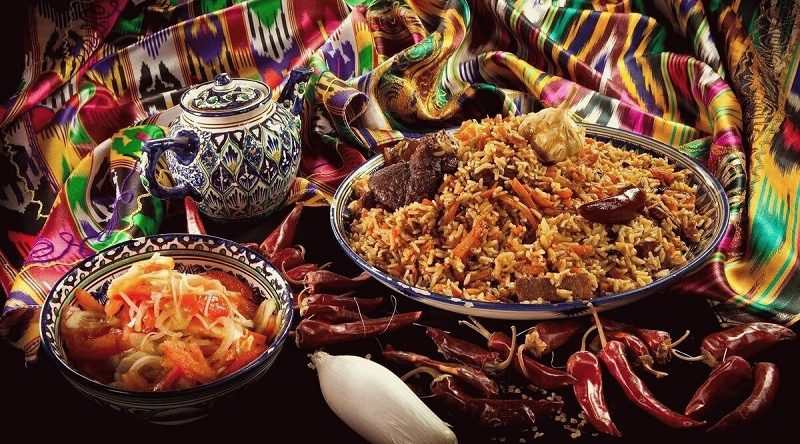
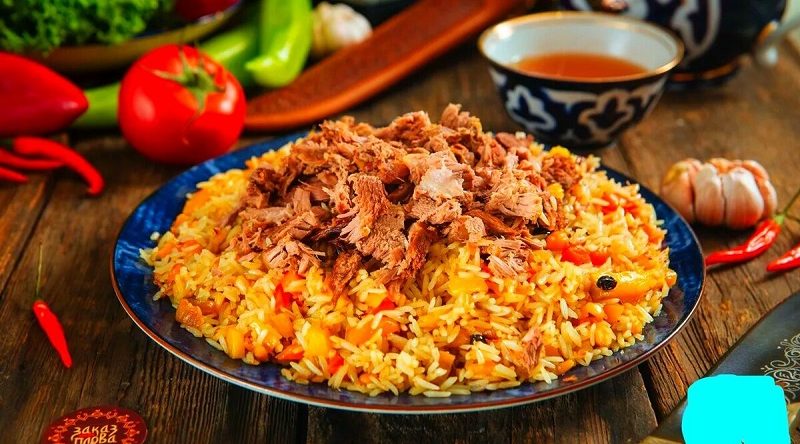
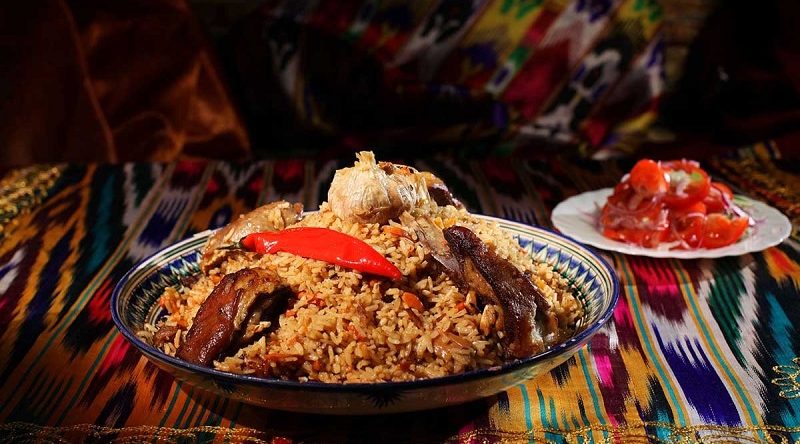
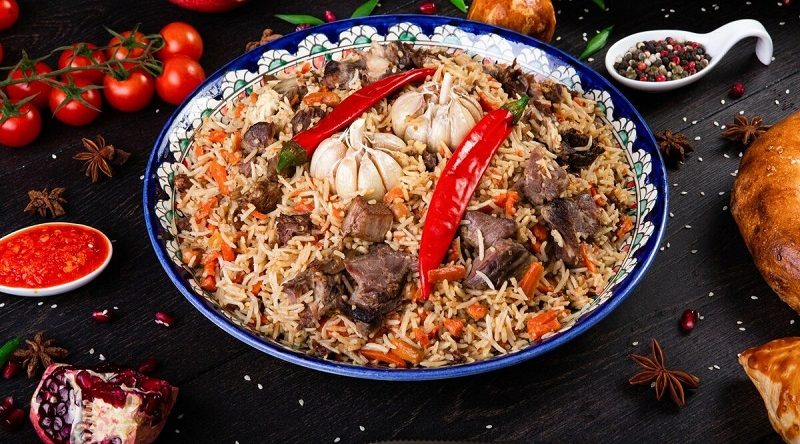
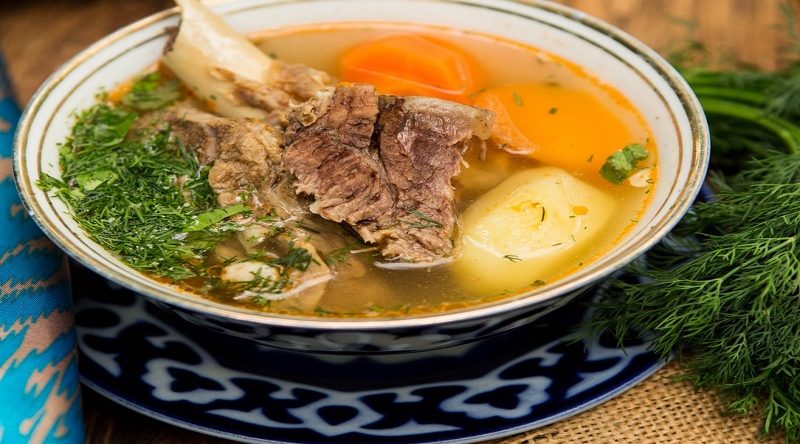
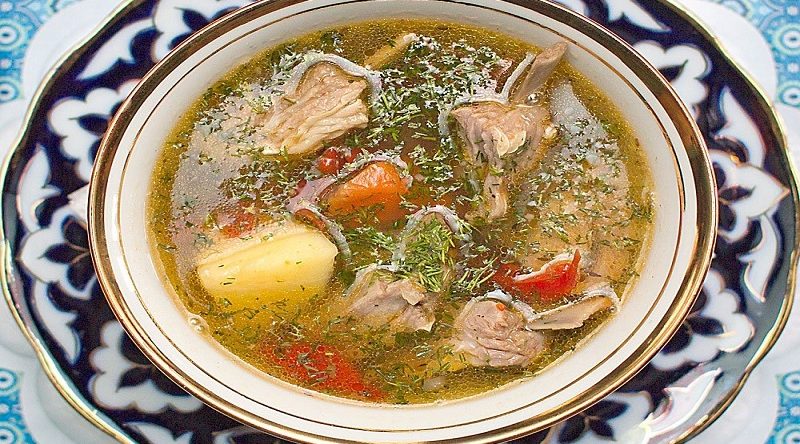
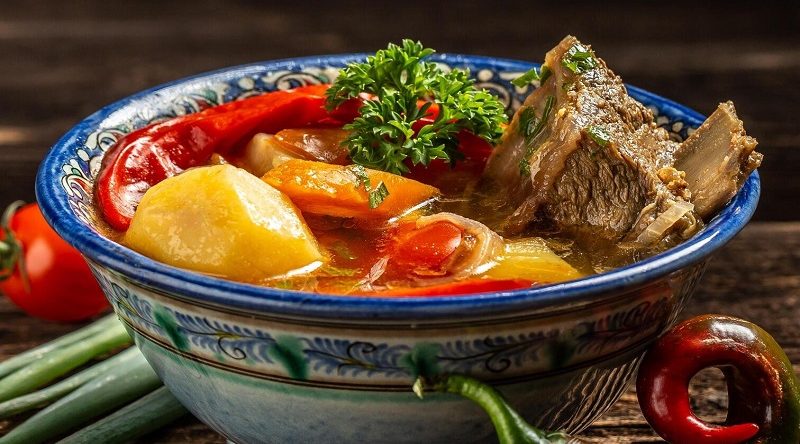
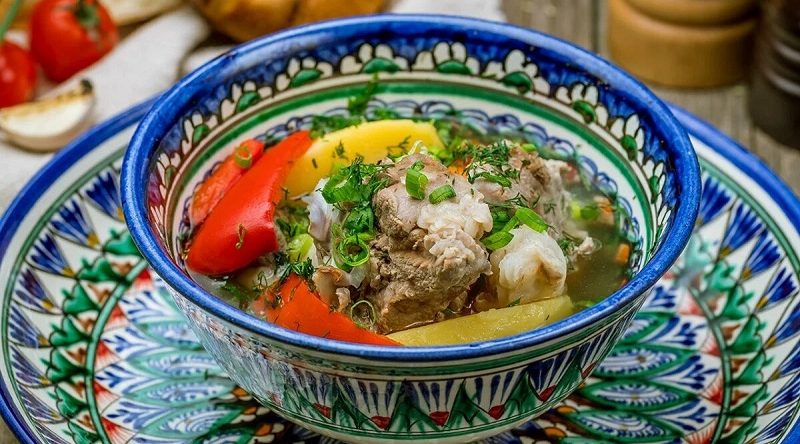
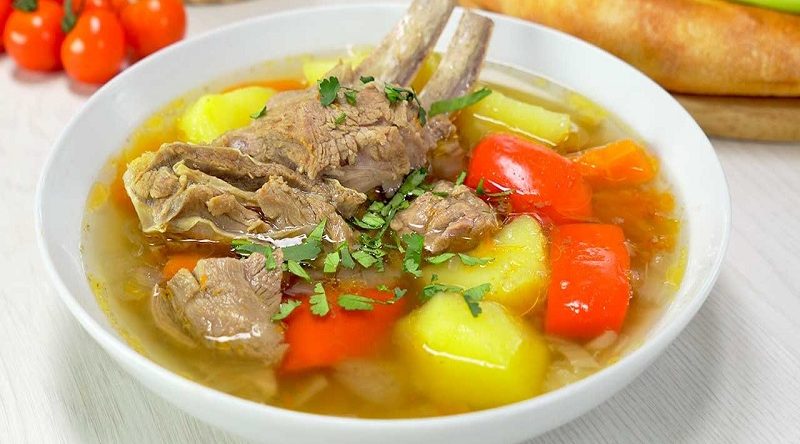
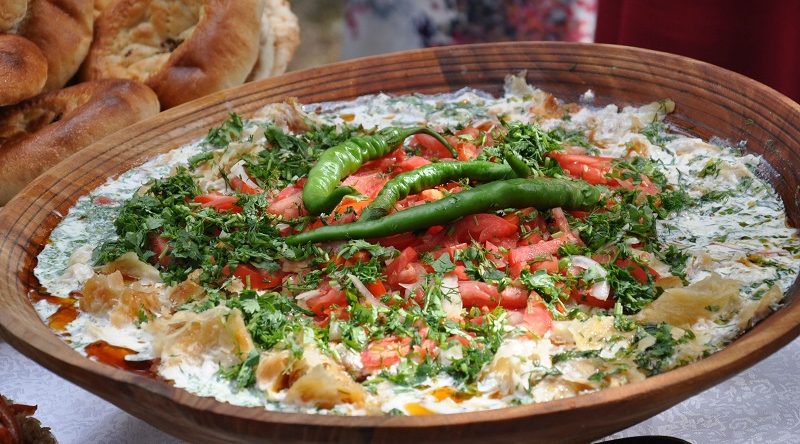
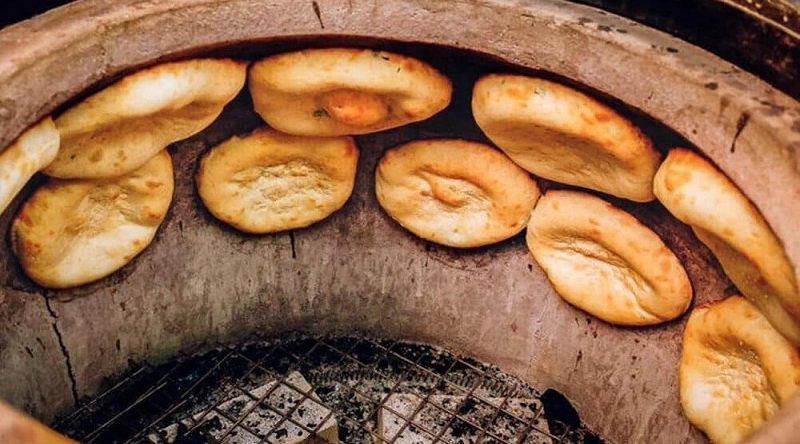
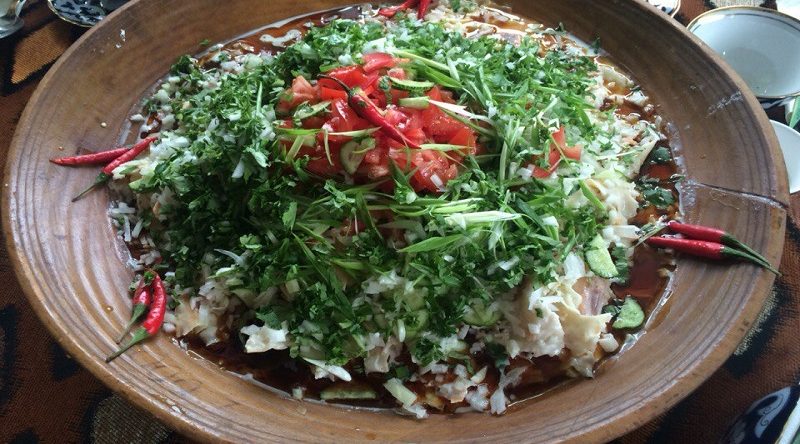
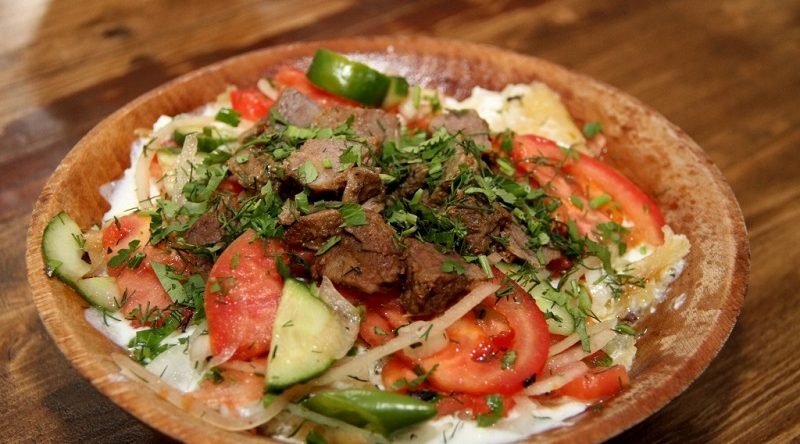
Tajik cuisine menu
Pilaf is one of the most famous and popular dishes of Tajik cuisine.
Kurutob is one of the most famous and ancient dishes of Tajik cuisine.
Siyoalaf is a traditional Tajik spring soup.
Kabob — barbecue
Kazan-kebab — meat with potatoes
Gandumob — lamb soup
Kalapocha is a traditional Tajik soup similar to Armenian khash. Prepared from the insides, it also has the name «horns-and-legs.» The taste and texture resembles a warmed Russian jelly.
Mantu — they are molded like large dumplings stuffed with pumpkin meat or with mountain greens, very useful, steamed in a mantyshnitsa.
Mastoba is rice soup.
Mashkhurda — rice soup with mash (mung beans)
Sambusa — pies of a characteristic three- or quadrangular shape (meat, chicken, pumpkin, potatoes, greens or rims (harder cream (kuk-samsa), cooked in a tandoor, oven or in a cauldron.
Tandoor kabob is made from a leg of lamb stewed in the tandoor for a long time. Thin strips of meat that touched the walls of the tandoor are considered the most delicacy.
Bargi tok — cabbage rolls, minced meat is wrapped in young grape leaves.
Lagman — Tajik noodles
Barak — Tajik dumplings
Shavla is a dish related to pilaf, with almost the same set of products (rice, meat (or offal), carrots), cooked in cottonseed oil.
Shurbo — potato soup with meat, the word «shurbo» means «soup» in general, and not any specific one.
Hom-Shurbo is the same as Shurbo, but the meat is placed in one piece.
Shakarob is a salad of finely chopped tomatoes and onions.
Shirchoy — tea with milk
Shila-bashir — plov
Shir-birinch — rice porridge
Otala — salad
Ordbiryon – chowder
